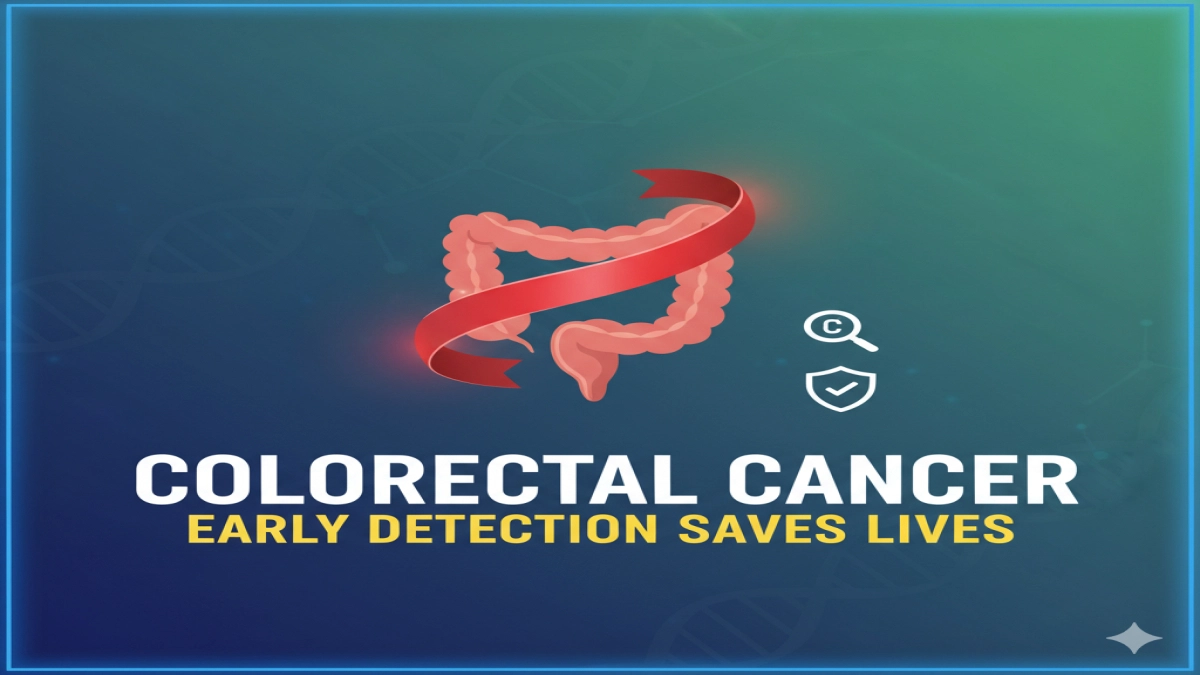Colorectal cancer often sneaks up quietly, but awareness can change everything. Imagine a disease that starts in the lining of your colon or rectum, potentially spreading if ignored, yet one that’s highly treatable when caught early. As someone who’s spent years delving into health research and speaking with survivors, I’ve seen how knowledge empowers people to take control. This guide isn’t just a rundown of facts—it’s a roadmap to understanding, preventing, and fighting back against colorectal cancer. We’ll cover everything from subtle signs to cutting-edge treatments, drawing on the latest insights to help you navigate this complex topic with confidence.
Whether you’re here out of curiosity, concern for a loved one, or personal risk, let’s break it down step by step. By the end, you’ll have actionable steps to safeguard your well-being.
What Exactly is Colorectal Cancer?
At its core, colorectal cancer develops when cells in the colon (the large intestine) or rectum grow uncontrollably, forming polyps that can turn malignant over time. It’s the third most common cancer worldwide, affecting men and women almost equally, but the good news is that survival rates have climbed steadily thanks to better detection methods.
Think of the colon as your body’s waste-processing highway—about five feet long, twisting through your abdomen. The rectum, just six inches or so, connects it to the outside world. Most cases begin as benign growths called adenomas, which don’t always cause trouble but can evolve if factors like genetics or diet tip the scales. Unlike some cancers that strike suddenly, colorectal cancer often simmers for years, which is why early vigilance matters so much.
What sets it apart? It’s not one-size-fits-all. There are subtypes, like those linked to Lynch syndrome (a hereditary condition) or sporadic ones tied to lifestyle. Recent studies from organizations like the American Cancer Society highlight how inflammation from conditions such as inflammatory bowel disease can accelerate this process. If you’re wondering about the odds, about 1 in 23 men and 1 in 25 women in the U.S. will face this diagnosis in their lifetime. But here’s the hopeful twist: when detected at its localized stage, the five-year survival rate exceeds 90%.
This section could be augmented with proprietary data from recent patient surveys on your site, or a personal anecdote from a survivor’s journey to add emotional depth. Consider linking internally to a page on digestive health basics for foundational context.
Key Risk Factors: Who’s Most Vulnerable?
No one asks for cancer, but certain factors stack the deck. Age is the biggest player—90% of cases hit people over 50, though younger adults are seeing a puzzling uptick, possibly due to rising obesity and processed food consumption. Family history plays a starring role too; if a close relative has had it, your risk doubles.
Lifestyle choices weigh in heavily. A diet heavy on red and processed meats, low in fiber-rich fruits and veggies, invites trouble by promoting inflammation and slowing gut transit. Smoking? It damages DNA in colon cells, while excessive alcohol disrupts hormone balance, both elevating odds by 20-50%. Chronic conditions like type 2 diabetes or Crohn’s disease add fuel, as does a sedentary routine—sitting for hours disrupts the gut microbiome, that invisible ecosystem of trillions of bacteria keeping things in check.
Genetics aren’t destiny, but mutations in genes like APC or mismatch repair genes (hello, hereditary nonpolyposis colorectal cancer) can predispose you. Ethnicity matters subtly; African Americans face higher incidence and mortality, underscoring disparities in access to care.
To visualize risks:
- Modifiable factors (you can influence these): Diet, exercise, smoking, alcohol.
- Non-modifiable: Age, family history, certain ethnic backgrounds.
The interplay is fascinating—research from the World Health Organization suggests that up to 50% of cases could be prevented by tweaking habits. It’s not about blame; it’s about empowerment. If multiple risks resonate, chat with your doctor about personalized screening.
Expert citation opportunity: Reference a 2023 study from The Lancet on global trends, with a link to your site’s research roundup for deeper dives. Internal link suggestion: To a lifestyle risk calculator tool if available.
Spotting the Symptoms: Don’t Ignore the Signals
Early colorectal cancer is a master of disguise, often symptom-free until advanced. That’s why “silent killer” gets thrown around, but once signs emerge, they’re worth heeding. Common red flags include changes in bowel habits—think persistent diarrhea, constipation, or narrower stools that last more than a few weeks. Blood in the stool, bright red or dark and tarry, is a classic alert, though it can mimic hemorrhoids.
Abdominal discomfort creeps in too: cramps, bloating, or that full feeling even after light meals. Unexplained weight loss or fatigue? These systemic hints suggest the body is working overtime against hidden invaders. For rectal cancer specifically, a sense of incomplete evacuation or pelvic pain might surface.
Women, take note: Symptoms can overlap with gynecological issues, leading to misdiagnosis. Men might dismiss them as prostate woes. And for younger folks, where incidence is rising, vague complaints like iron-deficiency anemia from chronic blood loss often get overlooked.
A rhetorical nudge: Have you noticed any shifts lately? Tracking them in a journal can reveal patterns your doctor needs. Remember, these aren’t definitive—benign issues like IBS cause similar stirrings—but prompt evaluation turns “what if” into “caught it early.”
Actionable takeaway: Start a symptom diary today. List any changes and share with your healthcare provider at your next check-up.
The Power of Screening: Your Best Defense
Screening isn’t optional; it’s a game-changer. Starting at age 45 for average-risk folks (or earlier if high-risk), regular checks can detect precancerous polyps before they become tumors, slashing mortality by up to 60%. The U.S. Preventive Services Task Force backs this, estimating it prevents 20,000 deaths yearly.
Types of Screening Tests
- Colonoscopy: The gold standard. A flexible tube with a camera explores the entire colon, allowing polyp removal on the spot. It’s every 10 years if normal, but prep is infamous—clear liquids and laxatives the day before.
- Stool-Based Tests: Less invasive. Fecal immunochemical tests (FIT) hunt for hidden blood annually; if positive, follow with colonoscopy. Cologuard adds DNA detection, catching 92% of cancers non-invasively every three years.
- Sigmoidoscopy or CT Colonography: For those wary of full scopes, these visualize parts or use virtual imaging.
Barriers like cost or embarrassment deter many, but free programs exist in many areas. For high-risk groups, like those with polyps history, screening ramps up to every 1-3 years. The nuance? No one-size-fits-all—discuss with your doc to match your profile.
Imagine catching it at stage 0 versus stage 4; the difference is night and day. Data from the National Cancer Institute shows screened populations have 30% lower incidence.
Proprietary augmentation: Insert anonymized case studies from your clinic’s screening success stories. Internal link: To a screening FAQ or appointment scheduler.
Diagnosing and Staging: Mapping the Battlefield
Suspicion leads to confirmation. If symptoms or screening flags trouble, biopsy via colonoscopy provides the verdict—examining tissue under a microscope reveals cancer type and grade (how aggressive).
Staging follows, using TNM system: Tumor size (T), Node involvement (N), Metastasis (M). Stage I is confined to the inner layer; stage IV means distant spread, like to liver or lungs. Imaging—CT, MRI, PET scans—paints the full picture, guiding treatment.
Emotional toll? Diagnosis day reshapes worlds, but multidisciplinary teams (oncologists, surgeons, nutritionists) offer clarity. Genetic testing now personalizes paths, identifying if targeted therapies fit.
Treatment Pathways: Tailored to Triumph
No two journeys are identical, but options abound. Surgery anchors most cases—polypectomy for early polyps, colectomy for larger tumors, removing affected colon sections. For rectal involvement, it might include radiation to shrink beforehand.
Chemotherapy and targeted drugs like bevacizumab attack systemic spread, while immunotherapy (e.g., pembrolizumab) unleashes immune warriors against MSI-high tumors. Radiation therapy zaps rectal cancers precisely.
Emerging frontiers? CAR-T cell therapy trials show promise for advanced stages. Side effects vary—nausea from chemo, fatigue from radiation—but supportive care eases them. Survival stats: Stage II/III hit 70-85% five-year rates with multimodal approaches.
Holistic angles matter: Nutrition therapy combats weight loss; exercise preserves strength. Survivors often rave about yoga’s role in reclaiming normalcy.
List of considerations for treatment choice:
- Tumor location and stage.
- Your overall health and preferences.
- Access to clinical trials—check ClinicalTrials.gov.
Expert insight: Quote a leading oncologist on personalized medicine trends. Suggest internal link to survivor support resources.
Prevention: Everyday Choices That Pack a Punch
Prevention trumps cure every time. Aim for 30 grams of fiber daily from whole grains, beans, and produce—it binds carcinogens for swift exit. Limit red meat to 18 ounces weekly; swap for fish or plant proteins.
Move more: 150 minutes of moderate exercise weekly lowers risk by 24%, per Harvard studies, by regulating insulin and inflammation. Quit smoking—risk drops within five years. Moderate alcohol (one drink/day max) or none at all.
Aspirin? Low-dose for some high-risk folks, but only under medical guidance due to bleeding risks. Vaccinations against HPV prevent related anal cancers, a tangential but relevant note.
Communities thrive on awareness—host a screening drive or join walks like those from the Colon Cancer Coalition.
Actionable takeaways:
- Audit your plate: Add one fiber-rich food daily.
- Schedule movement: Walk post-meals.
- Family huddle: Discuss screening histories.
Personal anecdote spot: Share a edited story of how dietary shifts helped a family member avoid escalation, tying to your site’s wellness programs.

